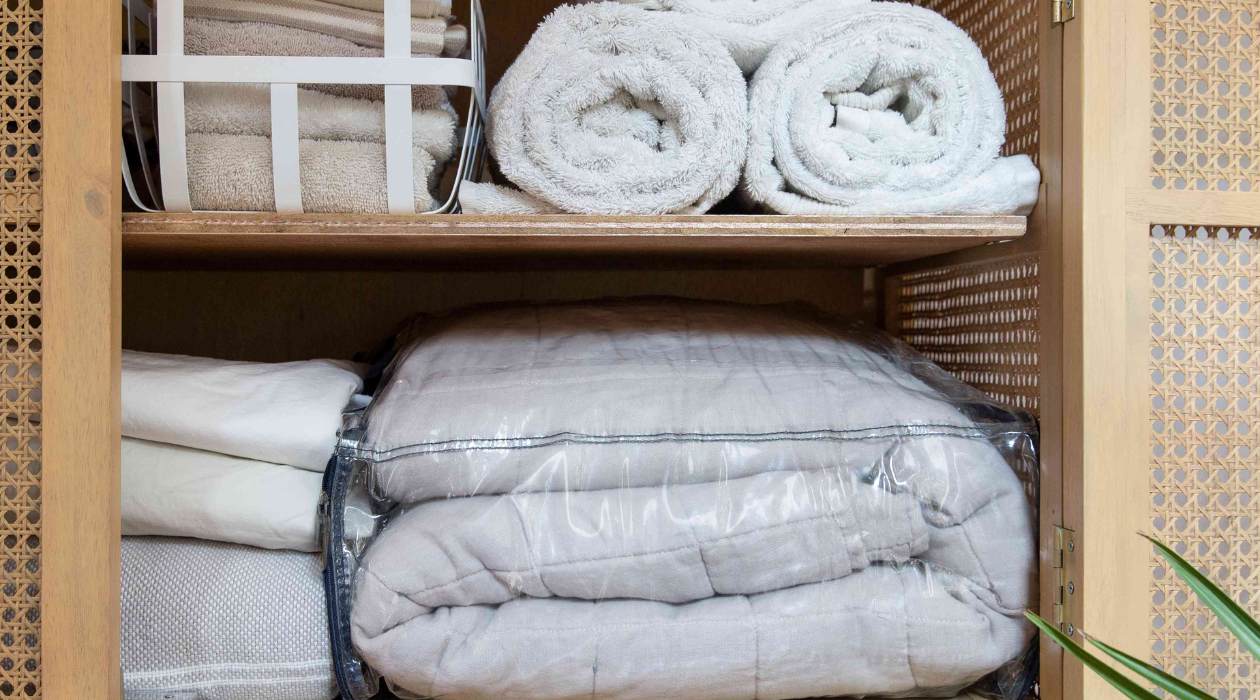

Articles
How To Store Large Comforters
Modified: February 28, 2024
Looking for tips on how to store large comforters? Check out our informative articles for practical solutions to keep your comforters clean and organized.
(Many of the links in this article redirect to a specific reviewed product. Your purchase of these products through affiliate links helps to generate commission for Storables.com, at no extra cost. Learn more)
Introduction
Storing large comforters can be a challenging task, especially if you don’t have enough space in your home. However, with the right techniques and preparation, you can keep your comforters fresh and ready for use whenever you need them. In this article, we will explore the best practices for storing large comforters, from assessing storage space to choosing the right storage containers and alternative solutions. By following these guidelines, you can ensure that your comforters remain in excellent condition, even during long-term storage.
When it comes to storing large comforters, the first step is to assess your available storage space. It is essential to have enough room to properly store your comforters without causing any damage or excessive compression. Consider dedicating a specific area in your home, such as a closet or under bed storage, for this purpose. By designating a space solely for comforter storage, you can keep them safely tucked away and easily accessible.
Before storing your large comforters, it is crucial to clean them thoroughly. Comforters can accumulate dust, dirt, and even stains, which can lead to unpleasant odors and attract pests. Follow the care instructions on the comforter’s label and use the appropriate cleaning method, whether it’s machine washable or requires professional dry cleaning. After cleaning, make sure the comforters are completely dry before proceeding to the next step.
Now that your comforters are clean and dry, it’s time to fold them properly. Folding large comforters can be a bit tricky, but using the right techniques will ensure that they fit neatly into your storage containers. Start by laying the comforter flat on a clean, spacious surface. Smooth out any wrinkles or creases, ensuring that the comforter is in its original shape. Fold the comforter in half lengthwise and then fold it in thirds or quarters, depending on its size. This method helps minimize bulk and makes it easier to store the comforter.
Choosing the right storage containers is essential to protect your comforters from dust, moisture, and pests. Opt for breathable containers made of natural materials like cotton or linen. Avoid using plastic bags or containers, as these can trap moisture and lead to mold and mildew growth. Additionally, make sure the containers are sturdy enough to support the weight of your comforters and have secure closures to prevent any damage or exposure.
Vacuum-sealing your comforters is another effective storage solution, especially if space is a constraint. Vacuum-sealed bags help reduce the size of the comforters by removing excess air, making them more compact and easier to store. However, it’s important to note that vacuum sealing may compress the comforters, so this method is best for short-term storage periods.
If you’re looking for alternative storage solutions for your large comforters, consider using space-saving bags or hanging storage organizers. Space-saving bags are a convenient option as they allow you to compress the comforters and remove excess air using a vacuum cleaner. Hanging storage organizers, on the other hand, are ideal for those who want to keep their comforters easily accessible while saving space in their closets.
Key Takeaways:
- Proper storage of large comforters involves assessing space, cleaning, folding, and choosing the right containers. Vacuum-sealing and alternative storage methods offer space-saving options, while long-term storage requires careful precautions to maintain comforter quality.
- By following the guidelines for storing large comforters, you can ensure they remain fresh, clean, and well-maintained. Whether using traditional storage containers, vacuum-sealing, or alternative methods, the goal is to preserve the quality and prolong the lifespan of your cherished comforters.
Read more: How To Store Comforter
Assessing Storage Space
When it comes to storing large comforters, assessing your available storage space is the first crucial step. Without adequate space, you may end up damaging or excessively compressing your comforters, leading to potential wear and tear. Here are a few considerations to keep in mind when assessing your storage space:
- Measurements: Start by measuring the dimensions of your comforters. These measurements will help you determine the amount of space required for storage and guide you in selecting appropriate storage containers.
- Closet Space: If you have a spacious closet, it can be an ideal choice for storing large comforters. Measure the height, width, and depth of your closet to gauge if it can accommodate your comforters without excessive compression.
- Under Bed Storage: Utilizing the space under your bed is another excellent option for storing large comforters. Measure the height and width of the available space and consider investing in under bed storage containers or vacuum-seal bags that fit perfectly.
- Garage or Attic: If you have a garage or attic space, assess if it is suitable for comforter storage. Keep in mind that these areas may be more prone to temperature fluctuations and humidity, so take precautionary measures such as using breathable storage containers and avoiding direct contact with the floor.
- Other Storage Areas: Don’t limit yourself to traditional storage spaces. Consider other areas in your home, such as a spare room or rarely used closet, that can be repurposed for comforter storage.
Once you have assessed your storage space, it’s essential to ensure that your comforters will not be subjected to any potential damage or excessive compression. Remember, providing enough space is crucial for maintaining the quality and longevity of your comforters.
Keep in mind that apart from the physical space, it’s also important to consider the accessibility of your comforters. If you plan on using them frequently, prioritize storing them in a location where they can be easily retrieved without creating a mess or disrupting other storage areas.
By taking the time to assess your storage space and making necessary arrangements, you can safely store your large comforters without compromising their quality. Remember, proper storage helps protect your comforters from dust, pests, and excessive compression, ensuring they remain fresh and cozy for years to come.
Cleaning and Preparing the Comforter
Before storing your large comforters, it is crucial to clean them thoroughly to ensure they are fresh and ready for future use. Comforters can accumulate dust, dirt, and even stains, which can lead to unpleasant odors and attract pests. Follow these steps to clean and prepare your comforter for storage:
- Check the Care Instructions: Start by checking the care instructions on the comforter’s label. Different comforters may have specific cleaning requirements, such as machine washable or dry-clean only. Adhering to these instructions will help maintain the quality and integrity of your comforter.
- Pre-Treat Stains: If your comforter has any visible stains, it’s essential to pre-treat them before washing. Use a gentle stain remover or a mixture of mild detergent and water to tackle the stains. Follow the instructions on the stain remover or create a solution using a small amount of detergent and water.
- Machine Washable Comforters: If your comforter is machine washable, consider using a large capacity, front-loading washing machine. Add a mild detergent suitable for delicate fabrics, and select a gentle or delicate cycle. Avoid using harsh chemicals or bleach, as they can damage the fabric and fillings of the comforter.
- Dry-Clean Only Comforters: If your comforter requires dry cleaning, consider taking it to a professional cleaner. Dry cleaning ensures proper cleaning without the risk of damaging the comforter. Follow the instructions provided by the cleaner for preparing your comforter for the dry cleaning process.
- Drying Your Comforter: After washing or dry cleaning, it’s important to thoroughly dry your comforter before storing it. Use a large capacity dryer or air-dry outdoors if weather permits. Make sure the comforter is evenly spread out to facilitate proper drying. Avoid exposing the comforter to direct sunlight for extended periods, as it can cause fading and damage the fabric.
- Fluffing and Shaping: Once your comforter is dry, give it a gentle shake and fluff to restore its loft and shape. Smooth out any wrinkles or creases, ensuring that the comforter is in its original form. This step will help maintain the fluffiness and appearance of the comforter while in storage.
By following these cleaning and preparation steps, you can ensure that your comforter is fresh, clean, and ready for storage. Clean comforters not only feel more comfortable but are also less likely to attract pests or develop odors during the storage period. Taking the time to properly clean and prepare your comforter will help maintain its quality and ensure a cozy sleep once it’s time to bring it out again.
Folding Techniques for Large Comforters
Folding large comforters can be a bit challenging, especially when trying to fit them into storage containers or limited storage spaces. However, with the right folding techniques, you can maximize space while keeping your comforters neat and organized. Here are some folding techniques to consider:
- Smooth and Flat Surface: Start by finding a clean and spacious surface to lay your comforter flat. This will help in evenly distributing the comforter and minimize wrinkles or creases during the folding process.
- Smooth Out Wrinkles: Before folding, smooth out any wrinkles or creases on the comforter by gently pulling and adjusting the fabric. This will ensure a neat and tidy appearance when folded and can help prevent deep-set wrinkles during storage.
- Lengthwise Fold: Begin the folding process by folding the comforter in half lengthwise. Bring one end of the comforter towards the other, aligning the edges as much as possible. This lengthwise fold will help reduce the overall size of the comforter and make it easier to handle.
- Quarter Fold or Third Fold: Depending on the size of your comforter, you can either proceed with a quarter fold or a third fold. For larger comforters, a quarter fold is recommended, while a third fold works well for smaller comforters. Simply fold the lengthwise folded comforter in half or thirds, again aligning the edges as accurately as possible.
- Smooth Out Air Pockets: As you fold the comforter, be mindful of any air pockets that may form. Smooth them out by pressing gently on the folded parts to ensure a more compact and uniform fold. Removing air pockets will help maximize storage space while maintaining the comforter’s shape.
- Secure with Straps or Elastic Bands: To keep the folded comforter in place, you can use straps or elastic bands. Wrap the straps or bands around the folded comforter, securing it tightly. This will prevent the comforter from unfolding or shifting during storage.
Remember, the goal of folding large comforters is to minimize bulk and create a compact shape that is easy to store. By following these folding techniques, you can efficiently utilize storage space and ensure that your comforters remain in good condition while in storage. Additionally, neatly folded comforters are easier to organize, retrieve, and maintain, adding convenience to your storage routine.
Take your time when folding the comforters, ensuring that each fold is precise and even. This will not only optimize storage space but also help preserve the appearance and fluffiness of the comforters. By giving attention to the folding process, you can enjoy perfectly folded comforters that are a joy to use when the time comes.
Proper Storage Containers
Choosing the right storage containers is essential when it comes to storing large comforters. The containers you select should provide adequate protection from dust, pests, and moisture, while also allowing the comforters to breathe to prevent any potential damage. Here are some factors to consider when selecting proper storage containers for your comforters:
- Size: Ensure that the storage containers you choose are large enough to comfortably accommodate your folded comforters. Measure the dimensions of your comforters and select containers that allow for a bit of extra space to avoid excessive compression.
- Material: Opt for storage containers made of breathable materials such as cotton or linen. These natural materials allow air to circulate around the comforters, helping to prevent moisture buildup and the growth of mold or mildew. Avoid using plastic bags or containers, as they can trap moisture and potentially damage the fabric of your comforters.
- Sturdiness: Look for storage containers that are sturdy and can support the weight of your comforters. A reinforced bottom and durable construction will ensure that the containers can withstand the pressure of stacked storage and protect your comforters from accidental damage.
- Closures: Choose containers with secure closures, such as snap-on lids, zippers, or latches. These closures will help seal the containers tightly, preventing dust, pests, and moisture from entering. Make sure the closures are of good quality and provide a strong seal to keep your comforters well-protected.
- Transparency: Consider opting for storage containers that are transparent or have clear sections. This will allow you to easily identify the contents without having to open each container. Transparent containers make it easier to retrieve specific comforters without disrupting the storage arrangement.
- Stackability: If you have limited storage space, look for containers that are designed to be stackable. Stackable containers help maximize vertical space and keep your comforters organized and easily accessible. Remember to place heavier comforters at the bottom of the stack to prevent toppling or damage.
When storing your comforters in the containers, make sure to fold them neatly and avoid overstuffing the containers. Overpacking can lead to excessive compression and affect the fluffiness and quality of your comforters. Allow the comforters to breathe by leaving a bit of space inside the container to maintain proper airflow.
Labeling the storage containers can also be useful, especially if you have multiple comforters or other items stored together. This will help you quickly identify the specific comforters you need without having to open each container. Use labels or clear plastic sleeves to mark the contents of each container for easy reference.
By selecting proper storage containers that prioritize breathability, size, sturdiness, and stackability, you can ensure the safety and preservation of your large comforters. Properly stored comforters will stay fresh, clean, and protected, ready to provide you with warmth and comfort whenever you need them.
Consider using vacuum storage bags to store large comforters. These bags can compress the comforter, making it easier to store in a closet or under a bed while also protecting it from dust and moisture.
Read more: How To Store A Comforter
Vacuum-Sealing Comforters
Vacuum-sealing your comforters can be an effective storage solution, especially if you are looking to minimize the amount of space they occupy. Vacuum-sealed bags are designed to compress the comforters by removing excess air, making them more compact and easier to store. Here’s what you need to know about vacuum-sealing your comforters:
Benefits of Vacuum-Sealing:
- Space Efficiency: By removing excess air, vacuum-sealed bags significantly reduce the size of your comforters. This allows you to maximize your storage space and potentially store more comforters or other items in the same area.
- Protection from Dust and Pests: Vacuum-sealed bags provide an airtight seal, protecting your comforters from dust, dirt, and potential pest infestations. This helps keep your comforters clean and free from any potential damage during long-term storage.
- Easy Accessibility: Stored comforters in vacuum-sealed bags are easy to access whenever needed. Simply remove the vacuum-sealed bag from storage, open it, and allow the comforter to expand back to its original size.
Steps to Vacuum-Seal Comforters:
- Select Appropriate Vacuum-Sealed Bags: Choose high-quality vacuum-sealed bags that are specifically designed for storing bedding items like comforters. Ensure that the bags are large enough to accommodate your comforter when folded.
- Fold and Prepare the Comforter: Fold your comforter following the folding techniques discussed earlier in this article. Ensure that the comforter is completely dry before proceeding with vacuum-sealing.
- Place the Comforter in the Bag: Open the vacuum-sealed bag and carefully place the folded comforter inside. Be sure not to overstuff the bag, as this may affect the effectiveness of the vacuum-sealing process.
- Seal the Bag: Once the comforter is placed inside the bag, seal it according to the instructions provided by the manufacturer. Most vacuum-sealed bags have a zip lock or double-seal mechanism to ensure a tight closure.
- Use a Vacuum Cleaner: Attach the nozzle of a vacuum cleaner to the valve on the vacuum-sealed bag. Turn on the vacuum cleaner and allow it to remove the air from the bag. This process will compress the comforter, making it more compact.
- Seal the Valve: Once the air has been removed from the bag, quickly seal the valve or close it tightly according to the instructions provided by the manufacturer. This will maintain the vacuum-sealed condition and prevent air from entering the bag.
Important Considerations:
- Short-Term Storage: Vacuum-sealing is recommended for short-term storage periods, typically up to a few months. Prolonged vacuum-sealing may compress the comforter excessively and affect its fill power and loft.
- Refluffing the Comforter: When it’s time to use the comforter, remove it from the vacuum-sealed bag and allow it to expand naturally. Give it a gentle shake and fluff to restore its loft and shape before placing it on your bed.
- Avoid Vacuum-Sealing Down Comforters: Down comforters, due to their delicate nature, may not be suitable for vacuum-sealing. The compression can affect the loft and insulation properties of the down filling. Check the care instructions or consult the manufacturer before vacuum-sealing a down comforter.
Before vacuum-sealing your comforters, always refer to the instructions provided by the manufacturer of the vacuum-sealed bags. Proper usage will ensure that the comforters are adequately protected and ready for use whenever you retrieve them from storage.
Vacuum-sealing is a convenient option for maximizing storage space and keeping your comforters clean and well-preserved during short-term storage. However, for long-term storage or delicate materials like down comforters, it is recommended to explore alternative storage solutions that allow for more breathability and protection.
Alternative Storage Solutions
While vacuum-sealing is a popular storage solution for large comforters, there are alternative options to consider, especially if you prefer methods that allow for more breathability or if space is limited. Here are some alternative storage solutions for your large comforters:
- Space-Saving Bags: Space-saving bags are a convenient and versatile option for storing large comforters. These bags are typically made of durable and airtight materials with a double-zip seal. They work by compressing the comforters using a vacuum cleaner. Space-saving bags are great for minimizing bulk and maximizing storage space.
- Hanging Storage Organizers: If you want to keep your comforters easily accessible and save space in your closets, consider using hanging storage organizers. These organizers typically have multiple compartments or shelves that can hold multiple comforters. Hang them on closet rods or hooks, and your comforters will be neatly arranged and easily retrievable.
- Under Bed Storage Bins: Utilizing the space under your bed is an effective way to store large comforters. Invest in under bed storage bins or containers that are specifically designed to fit under standard bed frames. These bins provide ample space for storing folded comforters and other bedding items.
- Basket Storage: If you prefer a more decorative storage option, consider using baskets. They not only provide storage space but also add a touch of visual appeal to your room’s decor. Look for baskets with lids to protect the comforters from dust and keep them well-hidden when not in use.
- Use Luggage or Suitcases: Large suitcases or luggage can serve as temporary storage for your comforters, especially if you are tight on storage space. Clean and dry the suitcases thoroughly before placing the comforters inside. This option is particularly useful if you have limited space in your closet or under bed storage.
When utilizing these alternative storage solutions, it’s essential to follow proper folding techniques to ensure that your comforters fit comfortably and avoid excessive compression. Remember to clean your comforters before storing them and make sure they are completely dry to prevent mold or mildew growth during storage.
Consider the accessibility and visibility of your comforters when choosing alternative storage solutions. Some options, like hanging storage organizers, provide easy access and allow you to see your comforters at a glance, while others, like under bed storage bins, offer a more concealed storage option.
Ultimately, the choice of the storage solution depends on your personal preference, available space, and the level of access you desire. Assess your needs and select the alternative storage solution that best suits your requirements while ensuring the safety and preservation of your large comforters.
Tips for Long-Term Storage
If you’re planning to store your large comforters for an extended period, such as during a season change or when they are not in use, it’s important to take certain precautions to ensure their longevity and keep them in optimal condition. Here are some tips for long-term storage:
- Clean Thoroughly: Before storing your comforters, make sure they are thoroughly cleaned. Remove any stains, odors, or dirt by following the recommended cleaning instructions. Clean comforters are less likely to attract pests and maintain their freshness during storage.
- Ensure Complete Dryness: Ensure that your comforters are completely dry before storing them. Any moisture left in the fabric can lead to mildew or mold growth, causing damage to the comforter. Air dry them in a well-ventilated area or use a dryer on a low heat setting.
- Consider Climate-Controlled Storage: If you have access to a climate-controlled storage facility, it is highly recommended for long-term storage. Temperature and humidity fluctuations can adversely affect the condition of your comforters. Climate-controlled storage helps maintain a stable environment, protecting your comforters from potential damage.
- Use Breathable Storage Containers: Opt for storage containers made of breathable materials, such as natural cotton or linen. These containers allow air circulation, preventing moisture buildup and maintaining the freshness of your comforters. Avoid using plastic bags or containers that can trap moisture.
- Avoid Sunlight Exposure: Direct sunlight can fade the colors of your comforters and weaken the fabric over time. When choosing a storage location, ensure it is away from windows or any direct sunlight. If using clear storage containers, consider covering them with a light-blocking material to protect the comforters from UV rays.
- Keep Away from Pests: Pests like moths and silverfish can cause damage to your comforters. To protect against infestations, consider using natural pest deterrents such as lavender sachets or cedar balls. Avoid using mothballs, as they contain harsh chemicals that can leave a strong odor on your comforters.
- Check Periodically: Even during long-term storage, it’s important to check on your comforters periodically. Inspect for any signs of damage, pests, or moisture. If you notice any issues, address them immediately to prevent further damage.
- Use Desiccants: Desiccant packs can help absorb excess moisture and reduce the risk of mold or mildew growth. Consider placing desiccant packs inside the storage containers or bags to maintain a dry environment for your comforters. Make sure to use desiccants that are safe for fabrics and follow the manufacturer’s guidelines.
- Avoid Sharp Objects: When storing your comforters, be mindful of any sharp objects that can puncture or tear the fabric. Keep the storage area free from potential hazards and avoid stacking heavy objects on top of the containers to prevent damage to your comforters.
- Label and Organize: Label each storage container to easily identify which comforters are inside without having to open them individually. This will save you time and effort when retrieving specific comforters. Consider organizing the containers based on different seasons or sizes, depending on your needs.
By implementing these tips, you can ensure that your comforters remain in excellent condition during long-term storage. Proper cleaning, drying, and using the right storage containers will help preserve their quality, ensuring that they are fresh and ready for use when you retrieve them from storage.
Remember, taking care of your comforters during storage extends their lifespan and ensures that you can enjoy cozy nights of sleep year after year.
Summary and Conclusion
Storing large comforters requires careful consideration to ensure that they remain in excellent condition and are easily accessible when needed. By assessing your storage space, cleaning and preparing the comforters, and folding them properly, you can optimize storage efficiency and maintain the quality of your comforters. Choosing the right storage containers, such as breathable ones made of natural materials, protects the comforters from dust, pests, and moisture.
If you’re looking to save space, vacuum-sealing your comforters can be a practical solution, although it’s important to note that this method is best for short-term storage. Alternative storage solutions, such as space-saving bags, hanging storage organizers, or under bed storage bins, provide versatility and accessibility while keeping your comforters well-preserved.
For long-term storage, it’s recommended to clean and thoroughly dry your comforters, use climate-controlled storage if available, and ensure that your storage containers are breathable. Taking precautions against pests, sunlight exposure, and periodic checks will further safeguard your comforters during storage.
In conclusion, storing large comforters requires a systematic and careful approach. By following the tips and techniques outlined in this article, you can ensure that your comforters remain fresh, clean, and well-maintained. Whether you choose to vacuum-seal your comforters, utilize alternative storage methods, or opt for traditional storage containers, the ultimate goal is to preserve the quality and prolong the lifespan of your cherished comforters, allowing for cozy nights of sleep for many seasons to come.
Frequently Asked Questions about How To Store Large Comforters
Was this page helpful?
At Storables.com, we guarantee accurate and reliable information. Our content, validated by Expert Board Contributors, is crafted following stringent Editorial Policies. We're committed to providing you with well-researched, expert-backed insights for all your informational needs.
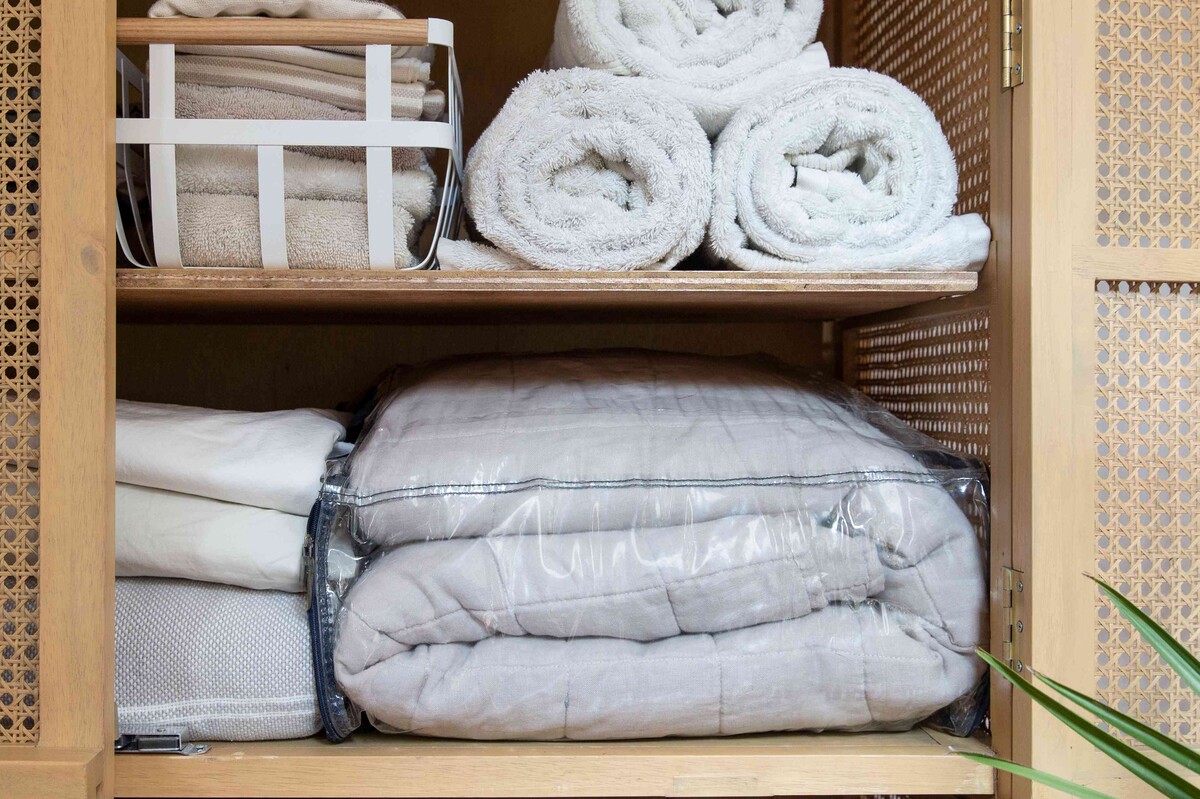
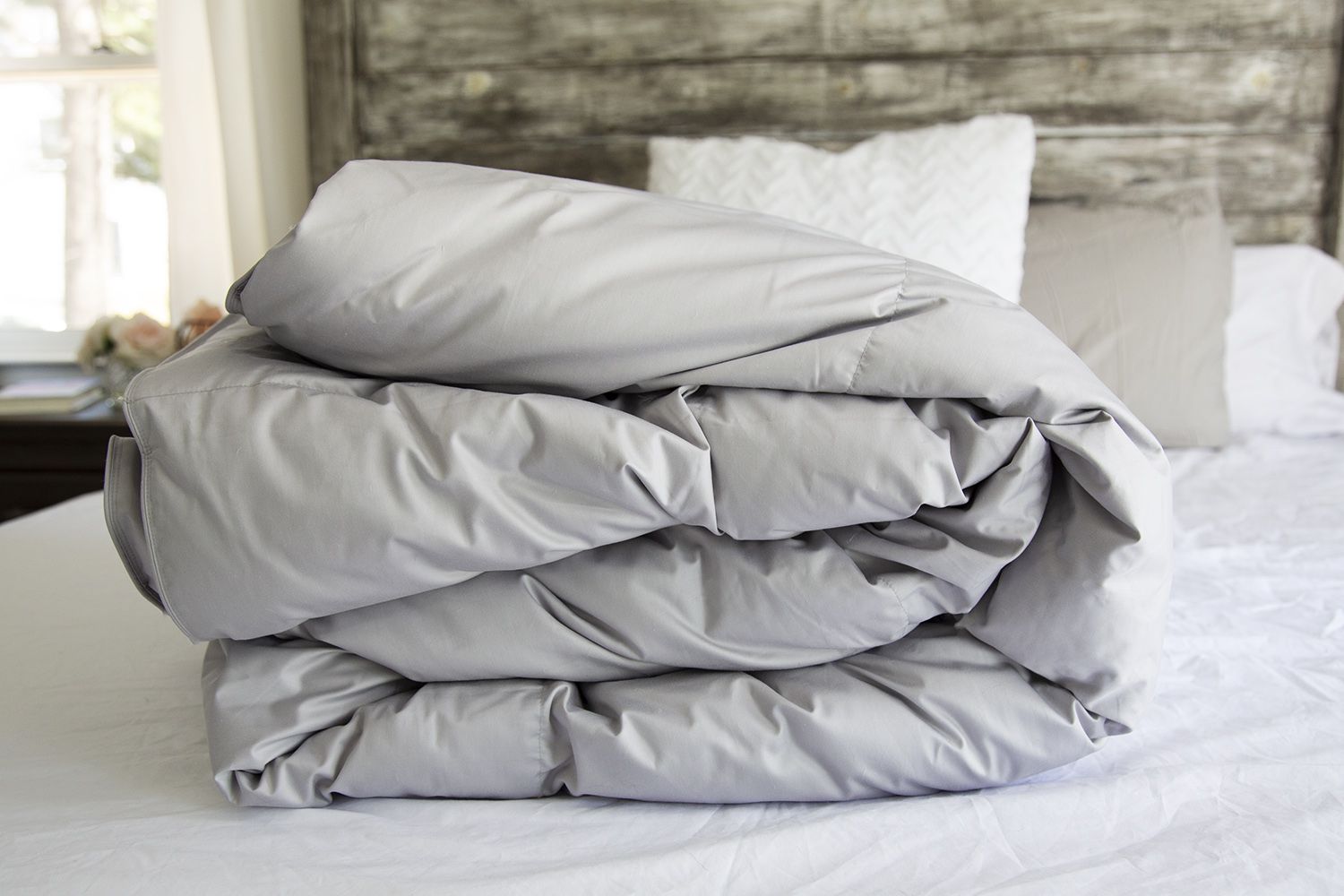
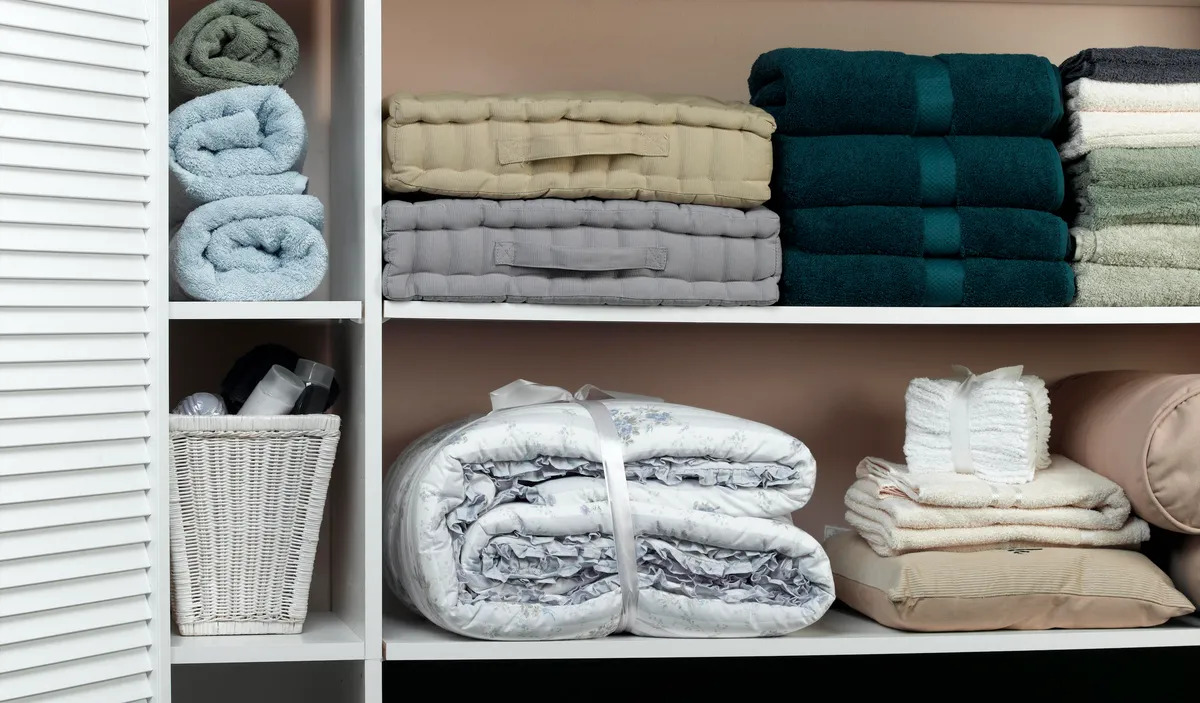

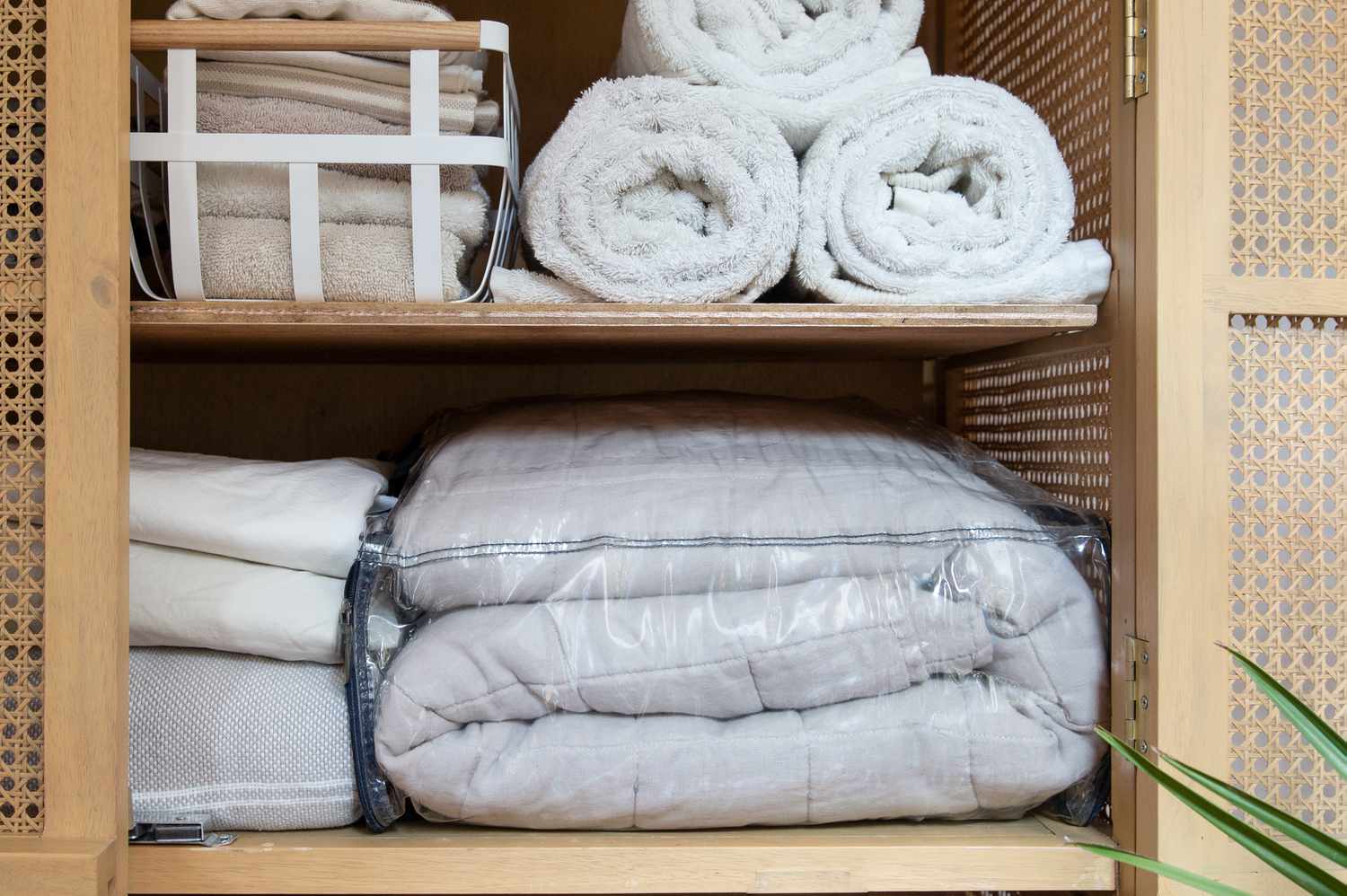


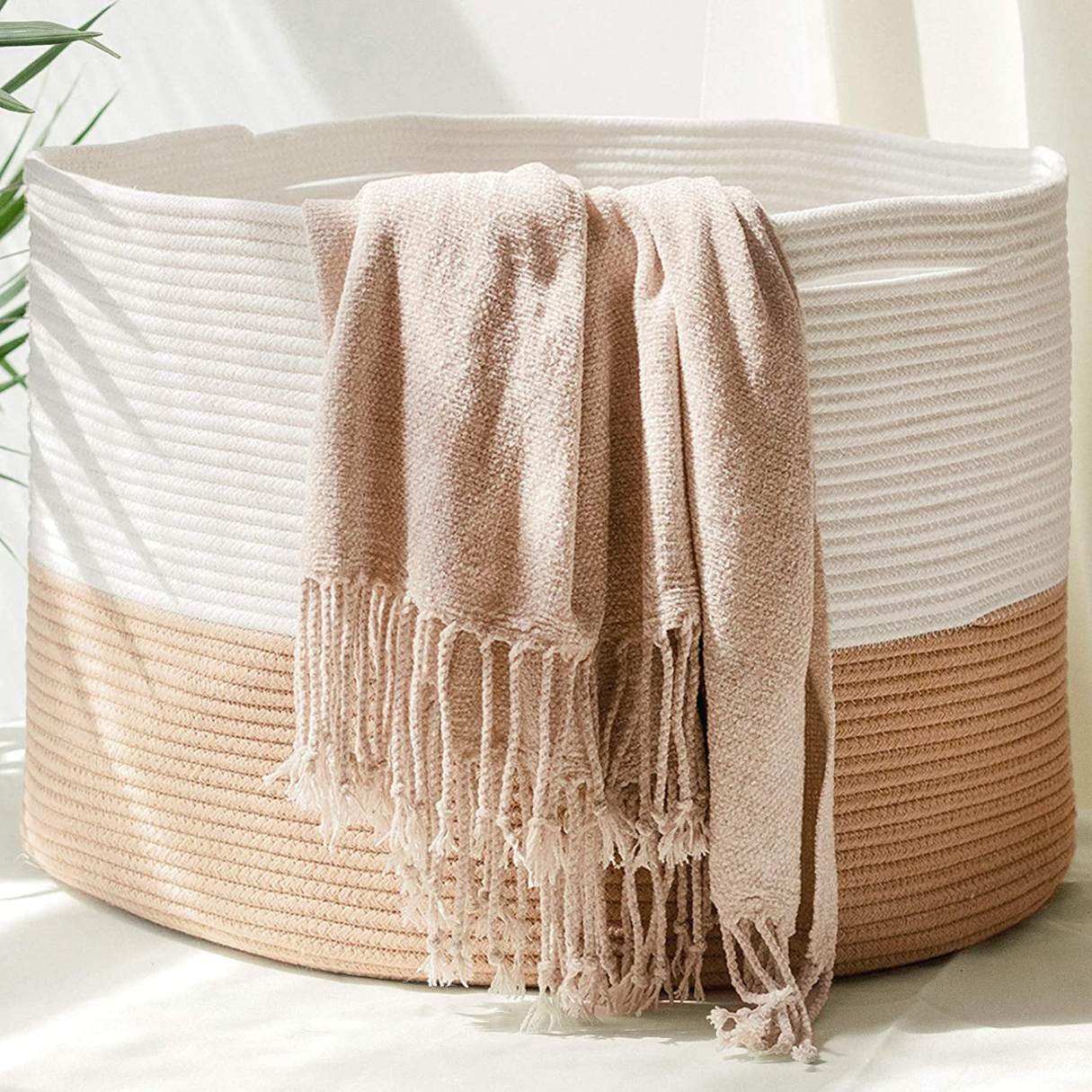


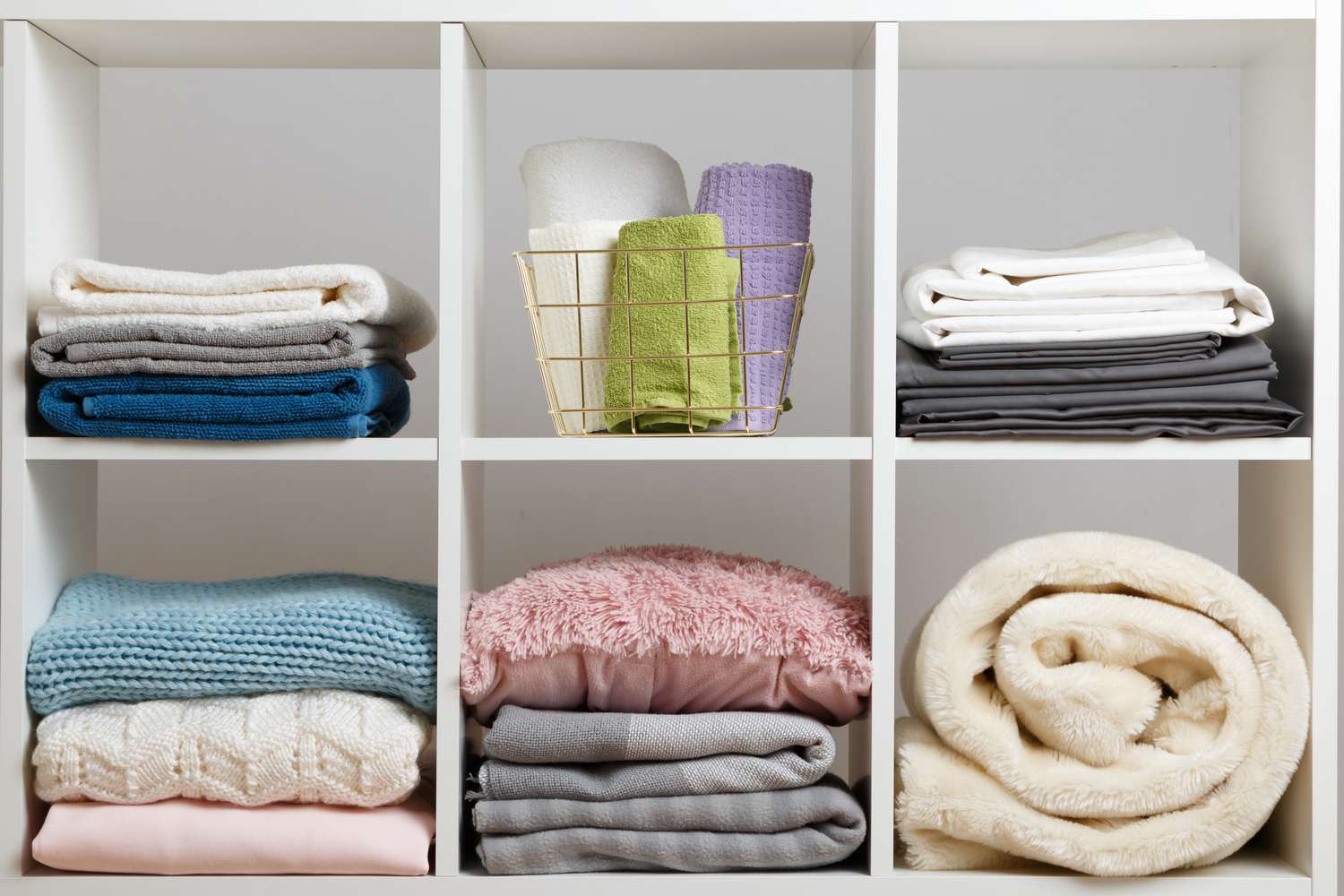




0 thoughts on “How To Store Large Comforters”